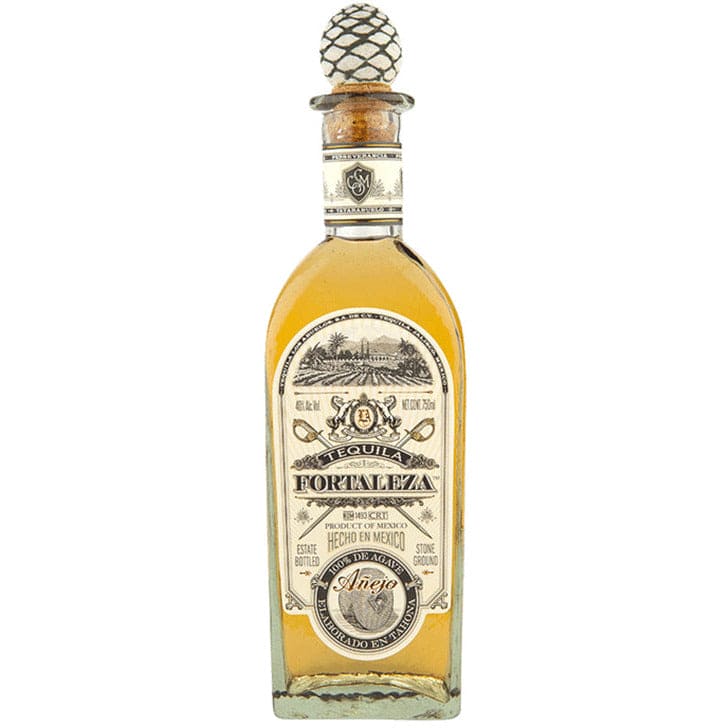
Fortaleza Anejo Tequila
Production Details
NOM: 1493
Agave Source: Tequila Valley
Cooking Method: Stone/brick oven
Crushing Method: 100% stone crushed
Distillation: Double Distilled
Pot Style: Copper pots
Proof: 80 (40% abv)
Fermentation: Open-air wood tanks
Sugars: 100% agave
Water Source: Natural Spring (Tequila Valley)
Bottles: Hand-blown in Mexico
Aging: 18 months in American Oak
People say…
“Rich and complex. As good as tequila gets.”
– Tracie Cone / Tequila Aficionado
“Citrus deliciousness! Baked agave, vanilla, slightly spicy. This is a delightful long-term sipper. This is a unique tequila experience.”
– Grover Sanschagrin / Founder: Tequila Matchmaker
Tasting Notes
Caramel, vanilla, butterscotch and cooked agave aromas practically jump from the glass in this highly-praised and perfectly-aged añejo. This tequila is so rich and complex that some people are even able to detect pineapple, peach, orange blossom, nutmeg, and raisin in the nose.
Once in your mouth, the full cooked agave experience continues with a thick and oily texture that coats your mouth in a very soothing way. Butterscotch, caramel, toffee, citrus, and hazelnuts are common flavors that people identify.
Fortaleza Añejo is a prized treat for any tequila lover.

Explore a World of Spirits and Liquor through our Comprehensive FAQ Section.
Discover a World of Spirits and Liquor in our Helpful FAQ Section.
Types of Spirits
- Whiskey: Made from fermented grain mash and aged in wooden casks.
- Vodka: Typically distilled from grains or potatoes and known for its clear, neutral flavor.
- Rum: Produced from sugarcane byproducts like molasses or sugarcane juice.
- Tequila: Made from the blue agave plant, primarily in the area surrounding Tequila, Mexico.
- Gin: Distilled with botanicals, primarily juniper berries, giving it a distinctive flavor.
Production Process
- Fermentation: The process where yeast converts sugars into alcohol.
- Distillation: Separating alcohol from the fermented mixture to increase its concentration.
- Aging: Storing spirits in barrels to develop flavors over time.
Tasting and Pairing
- Tasting Notes: Learn to identify different aromas, flavors, and textures.
- Food Pairings: Discover which spirits complement various dishes, enhancing the dining experience.
Cocktails and Mixology
- Classic Cocktails: Recipes and techniques for making popular drinks like the Old Fashioned, Martini, and Mojito.
- Mixology Tips: How to balance flavors and create your own cocktail recipes.
History and Culture
Origins: The historical background of different spirits.
Cultural Significance: How spirits are enjoyed and celebrated around the world.

